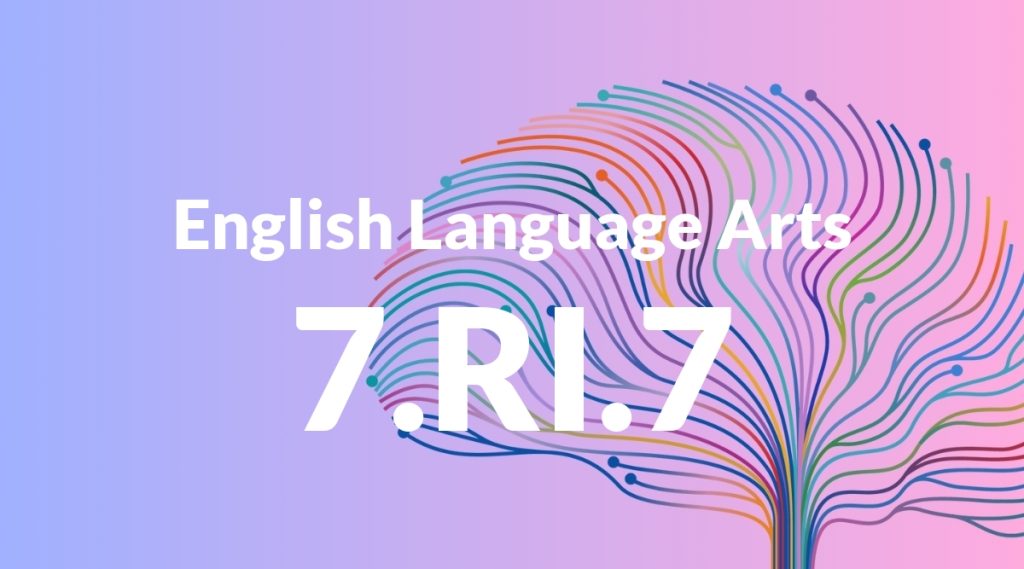Standard: 7.RI.7 – Compare and contrast a text to an audio, video, or multimedia version of the text, analyzing each medium’s portrayal of the subject (e.g., how the delivery of a speech affects the impact of the words).
Grade level: Grade 7
Subject: English Language Arts
Domain: Reading: Informational Text
Teacher Overview
This standard focuses on helping students understand how different media formats (text, audio, video) can portray the same subject in various ways. It is important because it develops critical thinking and media literacy skills, which are essential in the digital age. Students should be able to comprehend text, identify main ideas and details, and be familiar with different media formats.
After mastering this standard, students will be able to critically evaluate and synthesize information from various media sources, an essential skill for navigating the modern information landscape.
Common Misconception 1
Students might think that all media formats convey the same message and impact. This is incorrect because each medium has unique features that influence how the message is received.
Intervention 1
Use examples from different media formats to show how tone, emphasis, and visual elements can change the impact of the same content.
Common Misconception 2
Students may believe that the content remains the same regardless of the medium. This is incorrect because the presentation style can significantly alter the audience’s perception.
Intervention 2
Have students analyze how a speech’s delivery affects its impact by comparing a written transcript with a video of the speech.
Prerequisite Knowledge
Students should have basic skills in reading comprehension, familiarity with different media formats (text, audio, video), and the ability to identify the main idea and supporting details in a text.
Subsequent Knowledge
Students will develop skills in critical media literacy, including the ability to evaluate the credibility of sources, understand bias and perspective in media, and synthesize information from multiple formats.
Instructional Activities
- Compare a book chapter with its movie adaptation.
- Analyze a podcast episode and its transcript.
- Evaluate a live speech versus its recorded version.
- Compare news articles with video reports covering the same event.




